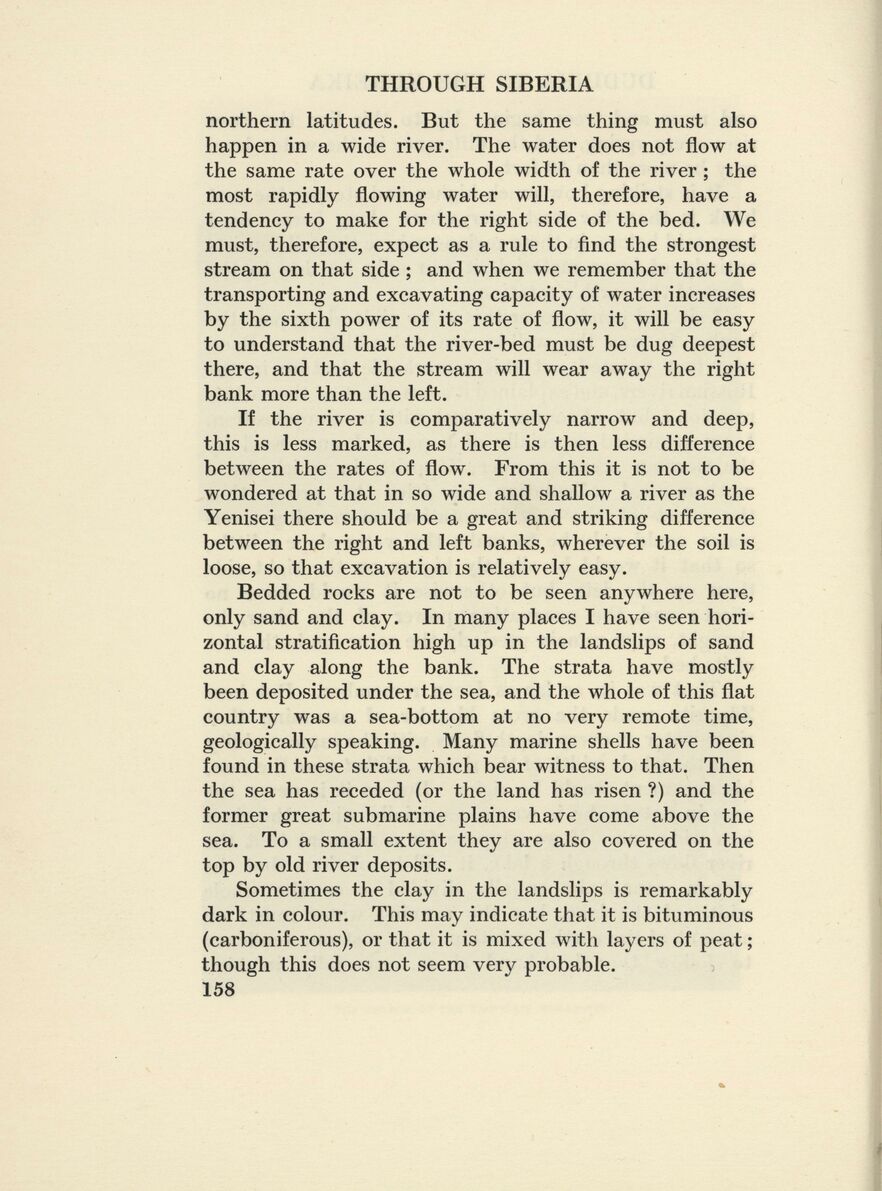
Full resolution (JPEG) - On this page / på denna sida - VIII. Dudinka to the Kureika

<< prev. page << föreg. sida << >> nästa sida >> next page >>
Below is the raw OCR text
from the above scanned image.
Do you see an error? Proofread the page now!
Här nedan syns maskintolkade texten från faksimilbilden ovan.
Ser du något fel? Korrekturläs sidan nu!
This page has never been proofread. / Denna sida har aldrig korrekturlästs.
THROUGH SIBERIA
158
northern latitudes. But the same thing must also
happen in a wide river. The water does not flow at
the same rate over the whole width of the river ; the
most rapidly flowing water will, therefore, have a
tendency to make for the right side of the bed. We
must, therefore, expect as a rule to find the strongest
stream on that side ; and when we remember that the
transporting and excavating capacity of water increases
by the sixth power of its rate of flow, it will be easy
to understand that the river-bed must be dug deepest
there, and that the stream will wear away the right
bank more than the left.
If the river is comparatively narrow and deep,
this is less marked, as there is then less difference
between the rates of flow. From this it is not to be
wondered at that in so wide and shallow a river as the
Yenisei there should be a great and striking difference
between the right and left banks, wherever the soil is
loose, so that excavation is relatively easy.
Bedded rocks are not to be seen anywhere here,
only sand and clay. In many places I have seen hori
zontal stratification high up in the landslips of sand
and clay along the bank. The strata have mostly
been deposited under the sea, and the whole of this flat
country was a sea-bottom at no very remote time,
geologically speaking. Many marine shells have been
found in these strata which bear witness to that. Then
the sea has receded (or the land has risen ?) and the
former great submarine plains have come above the
sea. To a small extent they are also covered on the
top by old river deposits.
Sometimes the clay in the landslips is remarkably
dark in colour. This may indicate that it is bituminous
(carboniferous), or that it is mixed with layers of peat ;
though this does not seem very probable.
<< prev. page << föreg. sida << >> nästa sida >> next page >>